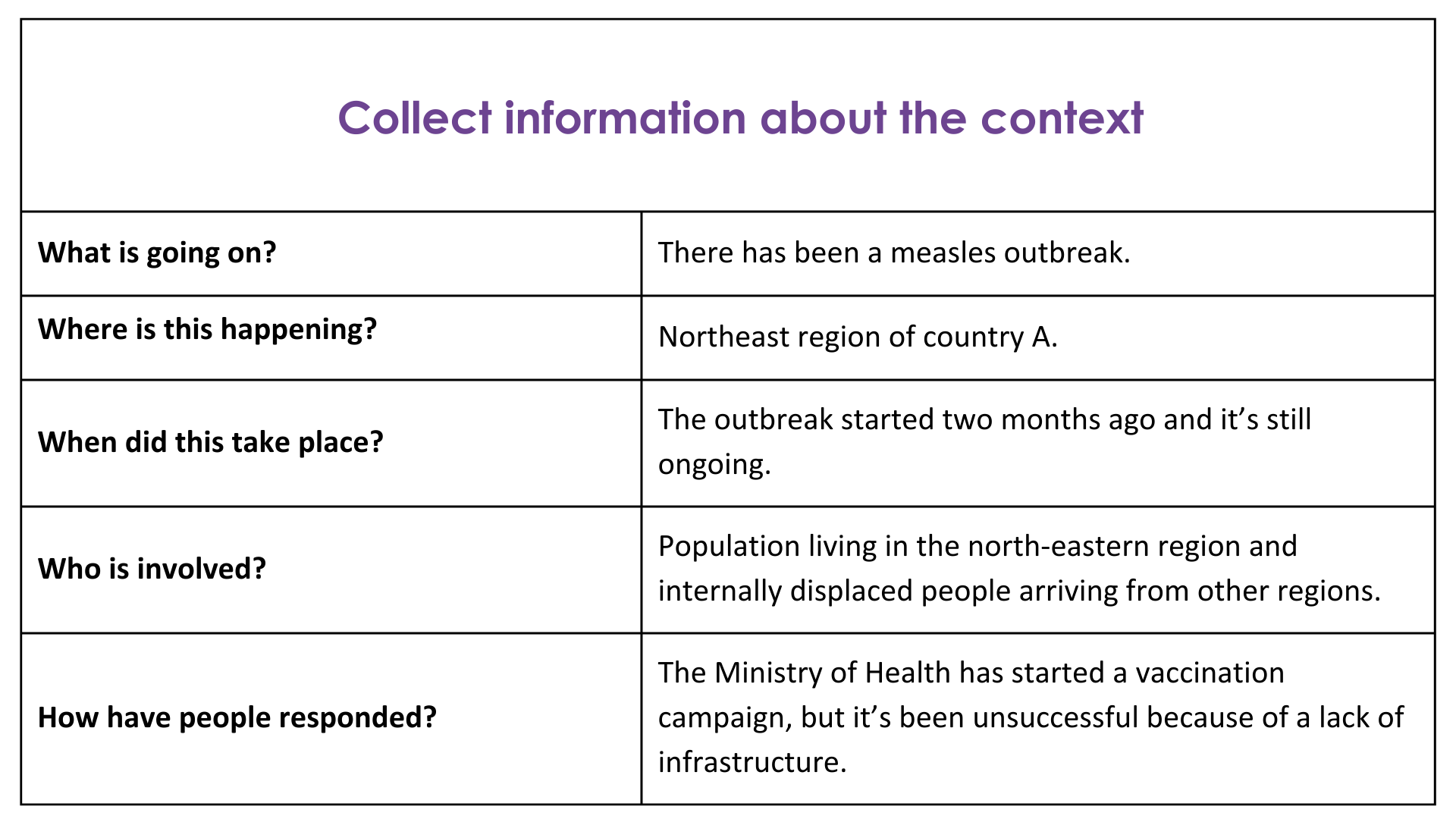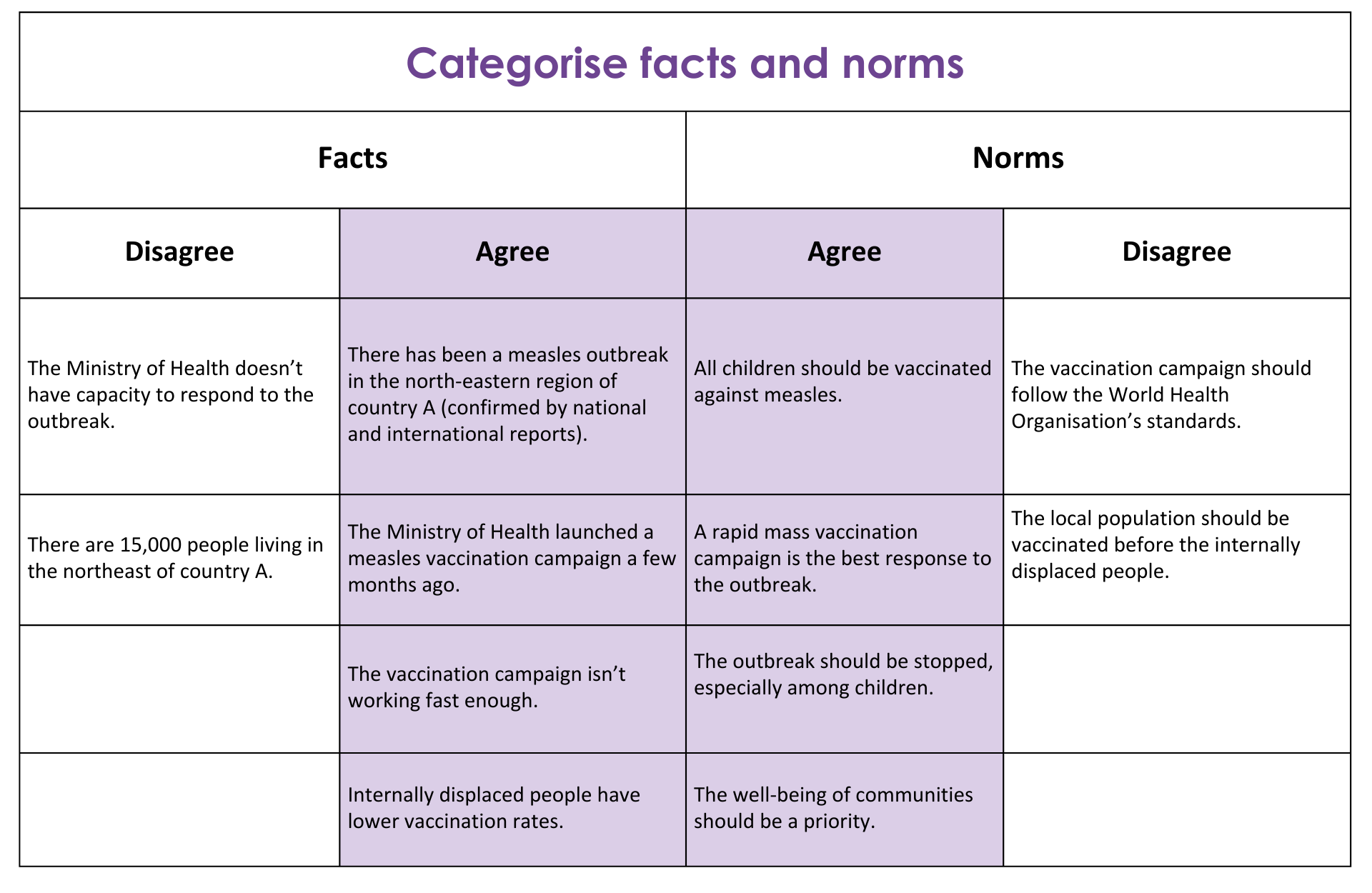
To assist and protect people affected by crises, you probably find yourself discussing, coordinating, and reaching agreements with different people.
As you do your best to move your operation forward, you may encounter roadblocks—sometimes quite literally—and might need to reach compromises.
In the paragraphs below, we’ll guide you through four simple steps to start a negotiation and build your opening argument following the “island of agreement” tool based on the CCHN negotiation methodology.
1. Start by collecting information.
Before putting anything into action, it’s essential to get your facts straight.
Humanitarian negotiations happen in politically charged environments full of tensions, disagreements and power struggles.
In these contexts, it’s essential to identify and sort relevant information.
What is going on? What are the issues? Who is involved? How many people are affected?

2. Sort your information into “facts” and “norms”
After you have collected enough contextual information, you can start sorting it into two categories: “facts” and “norms”.
Consider facts any piece of information you can prove with evidence.
For instance, your interlocutor might say 15,000 people are living in the north-eastern region, but according to your team, there are about 25,000 inhabitants. In case of disagreement, you could prove how many people are living in the region by conducting a census.
Norms, on the other hand, are behaviours that are considered normal in a particular culture or society. To detect possible norms, look for the word ‘should.’
For example, people in the region might believe all children should be vaccinated against measles.
Make sure you collect facts and norms from your perspective, but also from your counterpart’s.

Making the distinction between a fact and a norm will help you determine what strategy you should use to build your opening argument.
3. Decide what information you and your counterpart agree on (or not)
Whatever you and your counterpart can agree on will be the foundation for your opening argument. It’s important to start the negotiation by building on the existing common ground to show there is room to converge.
Whatever you disagree on shouldn’t be dismissed; instead, you should keep it in mind and introduce it at a later stage in the conversation.
Following this logic, sort the facts and norms you collected depending on whether you think your counterpart will agree or disagree.

Focus on the middle section, which is composed of agreed facts and norms. This is what we call the “island of agreement“; it will be the base on which you start your negotiation.
Later on, you can address whatever you disagree with.
4. Build your opening argument
You have collected relevant information, sorted it into ‘facts’ and ‘norms’ and decided which parts you can agree on, and which could cause some tension.
Now, it’s time to build your opening argument.
First, start by commenting on everything you agree on. Focus on creating a feeling of goodwill. This will help you build enough trust to then address disagreements at a later stage.

You could say, for example, “We can all agree there is a measles outbreak that is becoming more and more serious. The vaccination campaign launched by the Ministry of Health was a good start, but it’s not working fast enough. There is a part of the population, particularly those displaced from other parts of the country, that has a low vaccination rate. We would all like to stop the outbreak and preserve the community’s well-being, especially children. Given the situation, we can agree that the best response would be a mass vaccination campaign.”
Then, as the conversation moves forward, you might address the more delicate issues, such as the fact that the Ministry of Health needs help to respond to the outbreak or which vaccination standards should be used.

Since you have already agreed that a response is needed, that your organisation is there to help and that everyone’s well-being should be a priority, now the question is: how will you accomplish that together?
This is where you realise your opening statement worked and you need to start negotiating!
In conclusion…
Integrating your counterpart’s perspective into your opening statement is an important building block of the relationship.
By starting the conversation on what you both agree on, you can start the negotiation on the right foot and limit tensions.
The goal is not to be right, but to align as much as possible with how you and your counterpart see a situation.
This will help you to build a trustful relationship and open the door for your negotiation.
Good luck!



